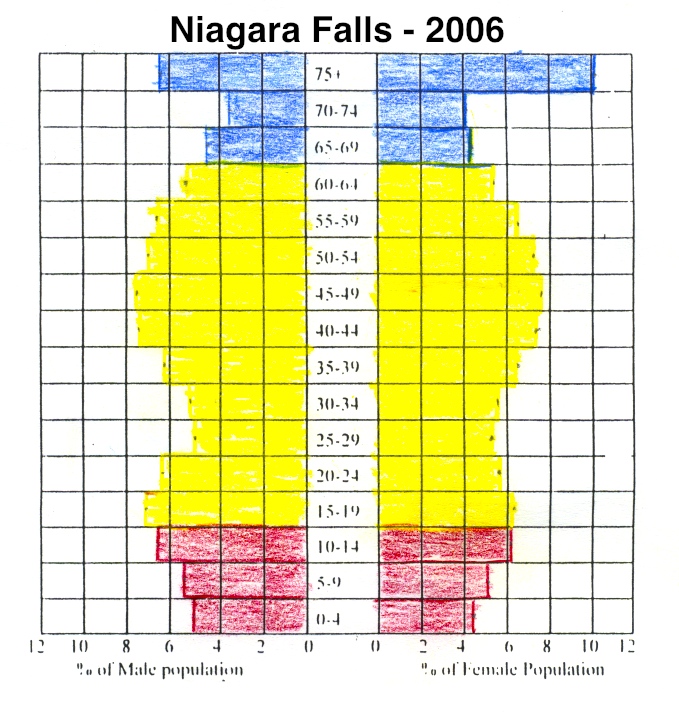 Clifton Hill at Night
Clifton Hill at Night
Niagara falls is a city centred around tourism. 14 million tourists visit Niagara every year. During the summer, the number of tourists is up to 7% of the population of 427,421. The city is the twin of Niagara Falls, New York. Both cities are centred around Niagara Falls itself.
I plan to go to Niagara Falls with my family from July 25th to July 29th. The trip will cost about $1,863
My activities and full budget are available in the itinerary
The economy of Niagara Falls is a services-based economy centred around tourists. The city is filled with tourist attractions, hotels and shops. The downtown area is the area closest to the falls, it is where all the most expensive hotels and attractions are because of the excellent view.
The main centre for tourist attractions is Clifton Hill street. The street is almost entirely filled with restaurants and attractions like arcades, bowling alleys, wax museums and theatres.
The unemployment rate (in 2006) was 6.1 percent which was just slightly lower than the Ontario average of 6.4 percent and the Canadian average of 6.3 percent. After the economic crisis however, unemployment rates have gone up. Canada's unemployment rate is now 7.6 percent. Recent data for unemployment will not be available till the 2011 census is complete. The average income was also slightly lower at $23,000 per year as opposed to $24,000.
The top 5 employment groups in the area are:
Niagara falls is the most unique land form in the area. The valley was formed by the same glaciers that formed the great lakes. Water plunged off a cliff and started eroding away the softer shale underneath the limestone cap rock that eroded more slowly. This slow erosion moved the falls slowly up the river to where they are now.
Niagara Falls is part of the Great Lakes - St. Lawrence lowlands landform region. Meaning it is excellent farm land with rich wet climate brown soil. The terrain is rolling hills and plains.
Niagara Falls is part of the mixedwood plains ecozone and the mixed forest vegetation region. Meaning it has both coniferous and decidous trees like white pine,spruce, elm and maple. Some animals that live in the area are black bear, Canada goose, beaver and great heron. It has cool winters with average temperatures around -5C and warm summers with average temperatures of about 17C.
For more information see the climate page
Niagara falls has it's own bus system with many different routes. As well as the normal buses there are also 3 special Falls Shuttle buses which go in loops visiting different attractions.
Niagara Parks also operates it's own people mover system. You can buy a full day pass for $9. The buses go in a loop visiting the major attractions.
I, however plan to get around by walking and driving. There are many nice walking paths and most of the attractions are clustered in one area so walking is an ideal method of transportation. I am going to drive to Niagara so I will have a car to drive places if necessary.

Niagara's demographic sizes are fairly normal for Canada. You can clearly see the baby boomers in the demographic chart centred around 50. You can also see that there are significantly more women over 75 than men. The decline in birth rate in the 1970's (Generation X) is visible in the low number of people around 30 years old. The recent decline in birth rate is also visible in the 014 age range.
17% of the population are immigrants but only 6% are visible minorities. This may be caused by people from Europe or the US immigrating to Niagara so they can retire in a nice town. The top 5 visible minorities in 2006 were: